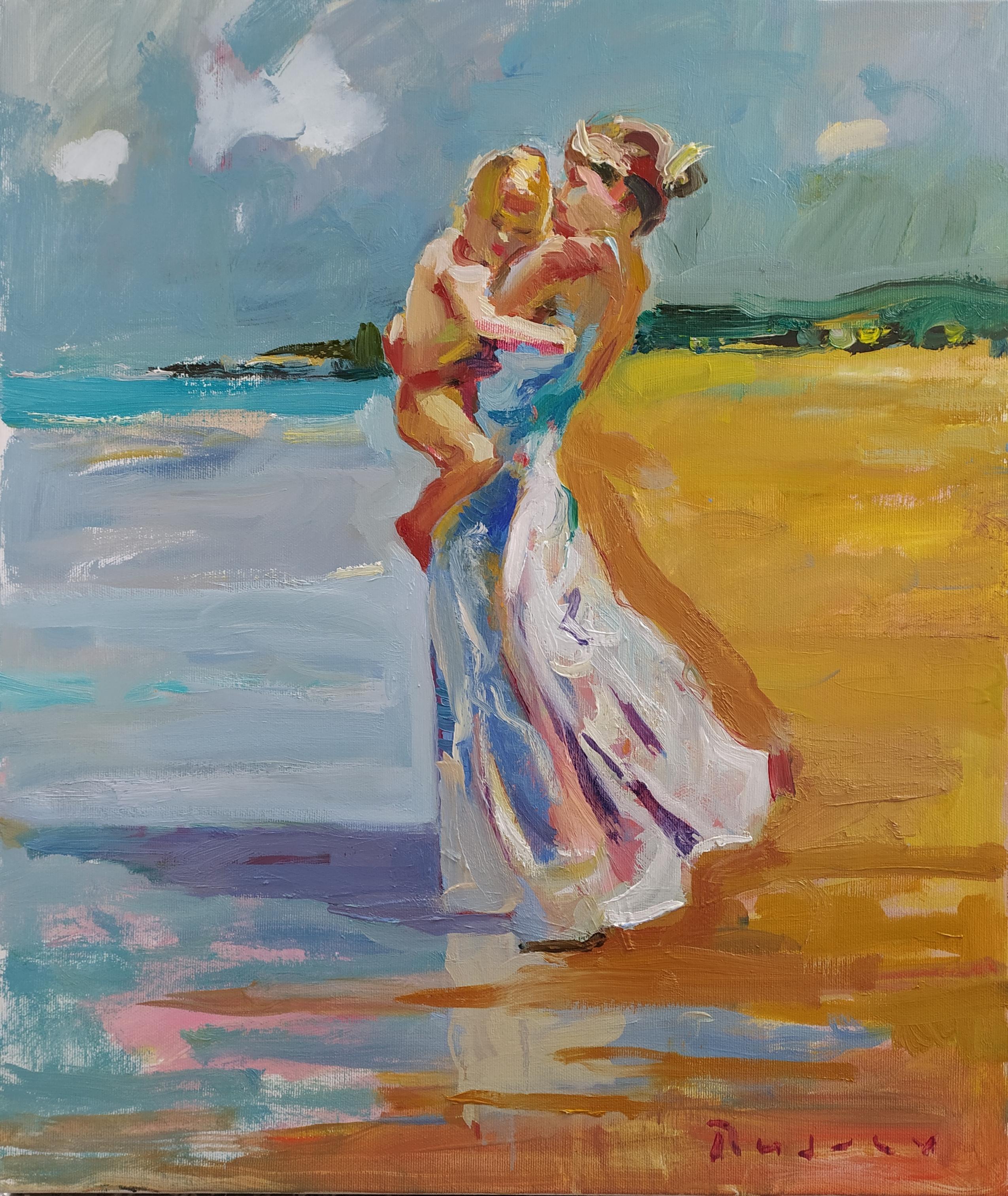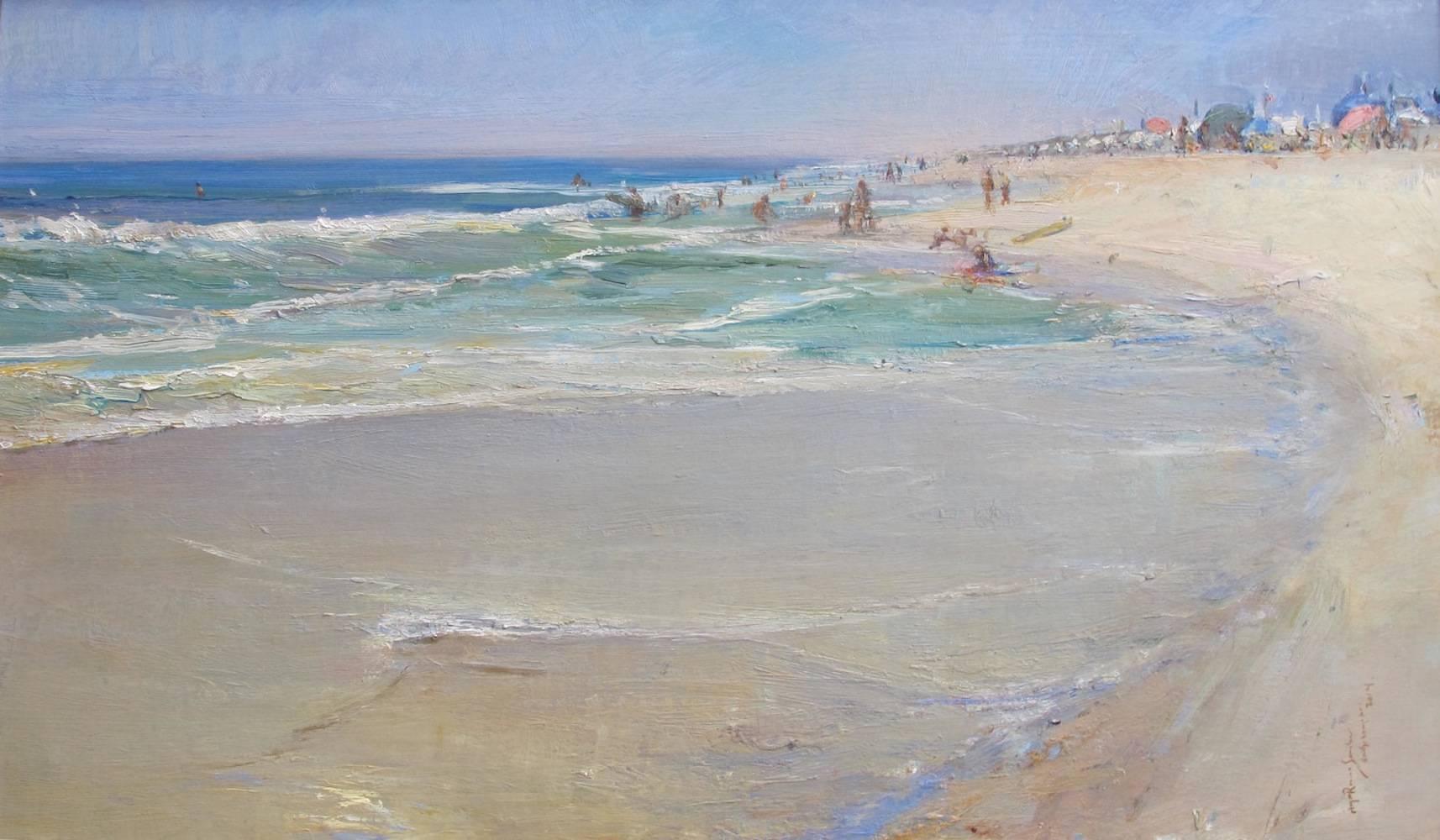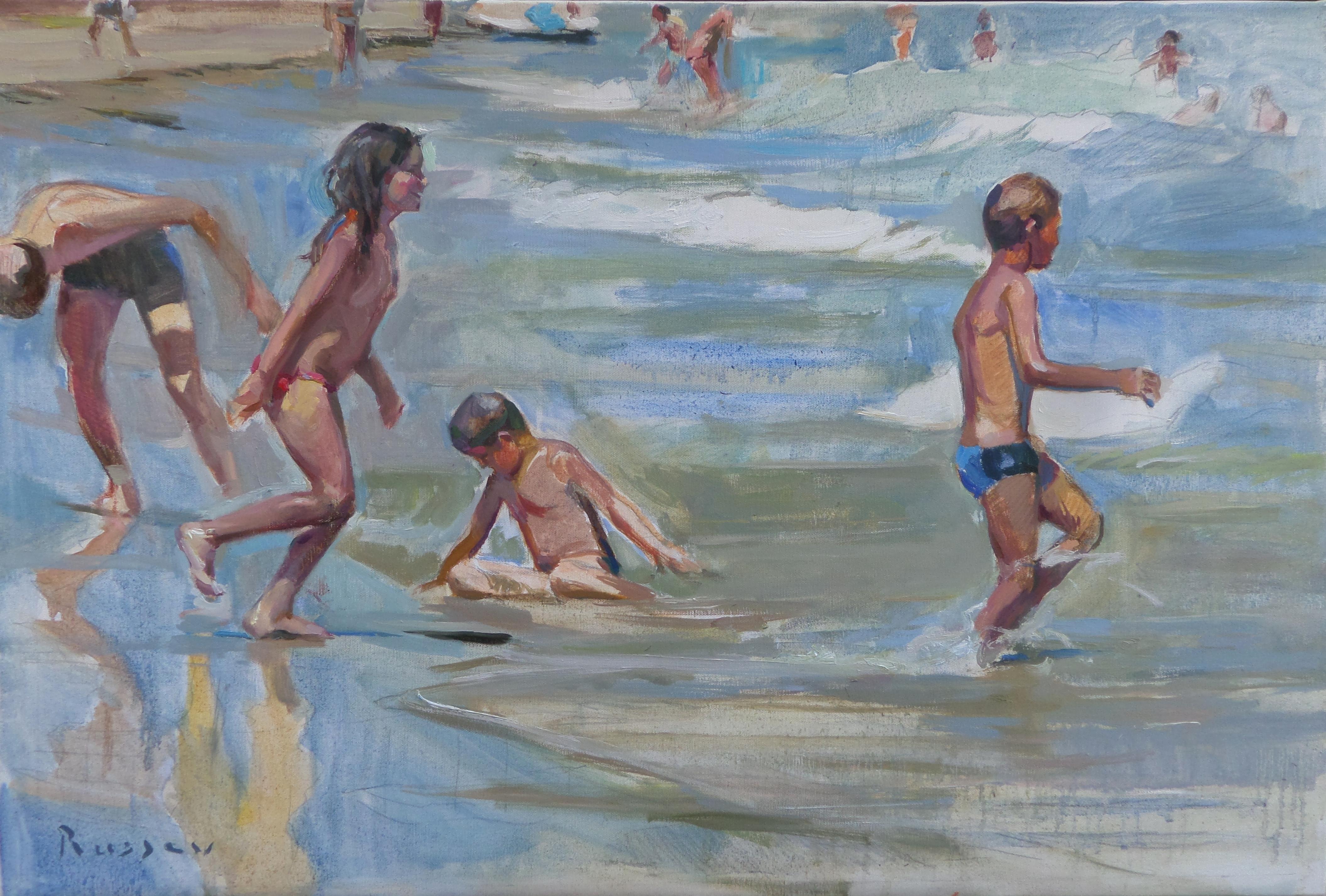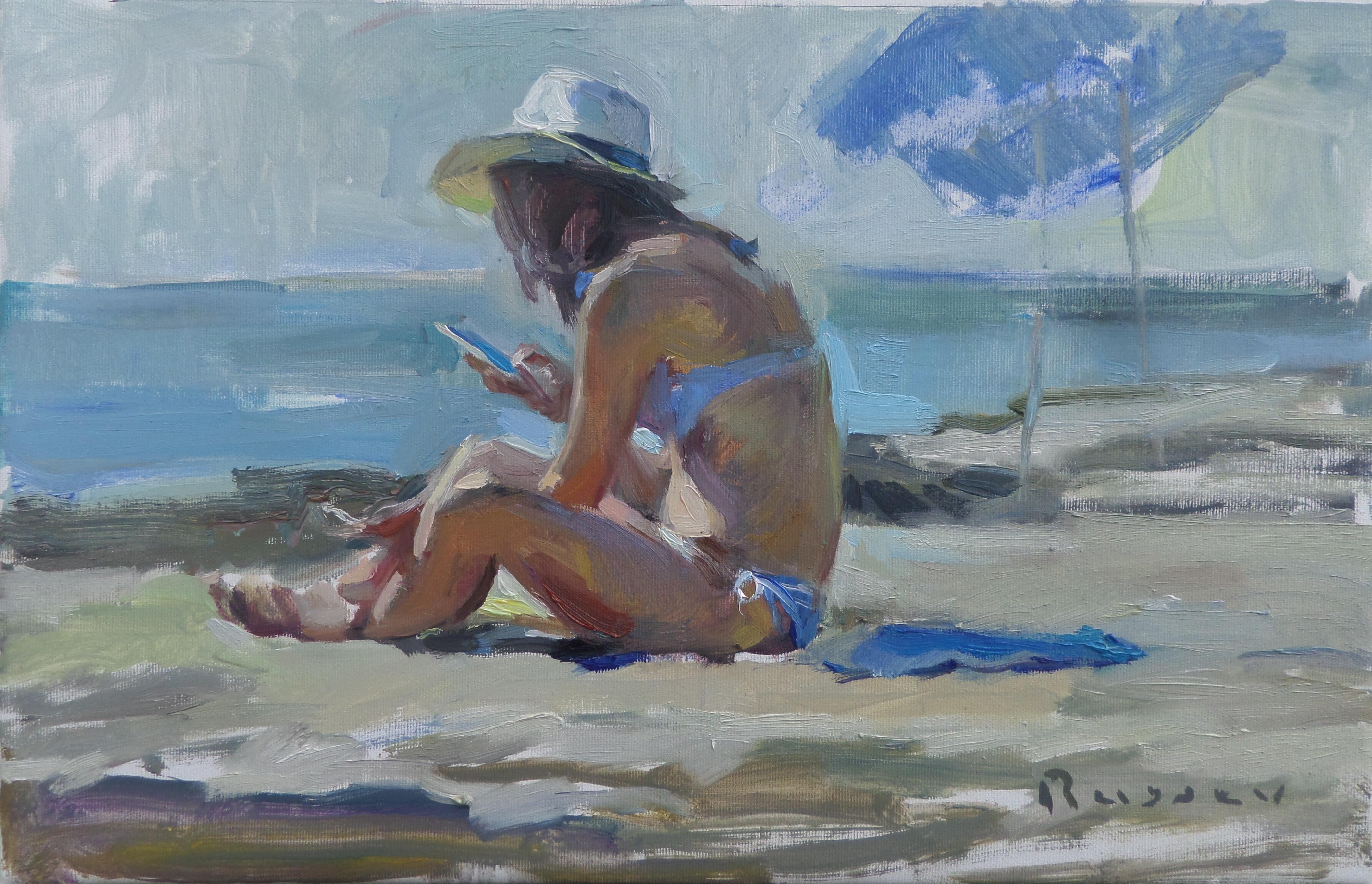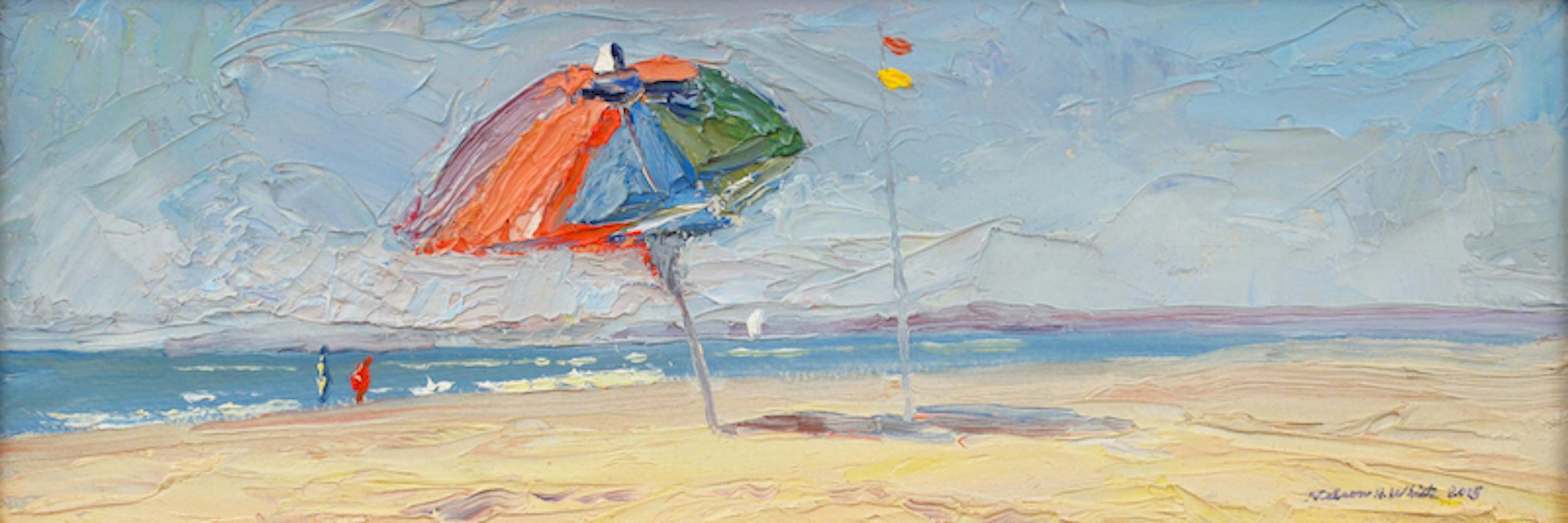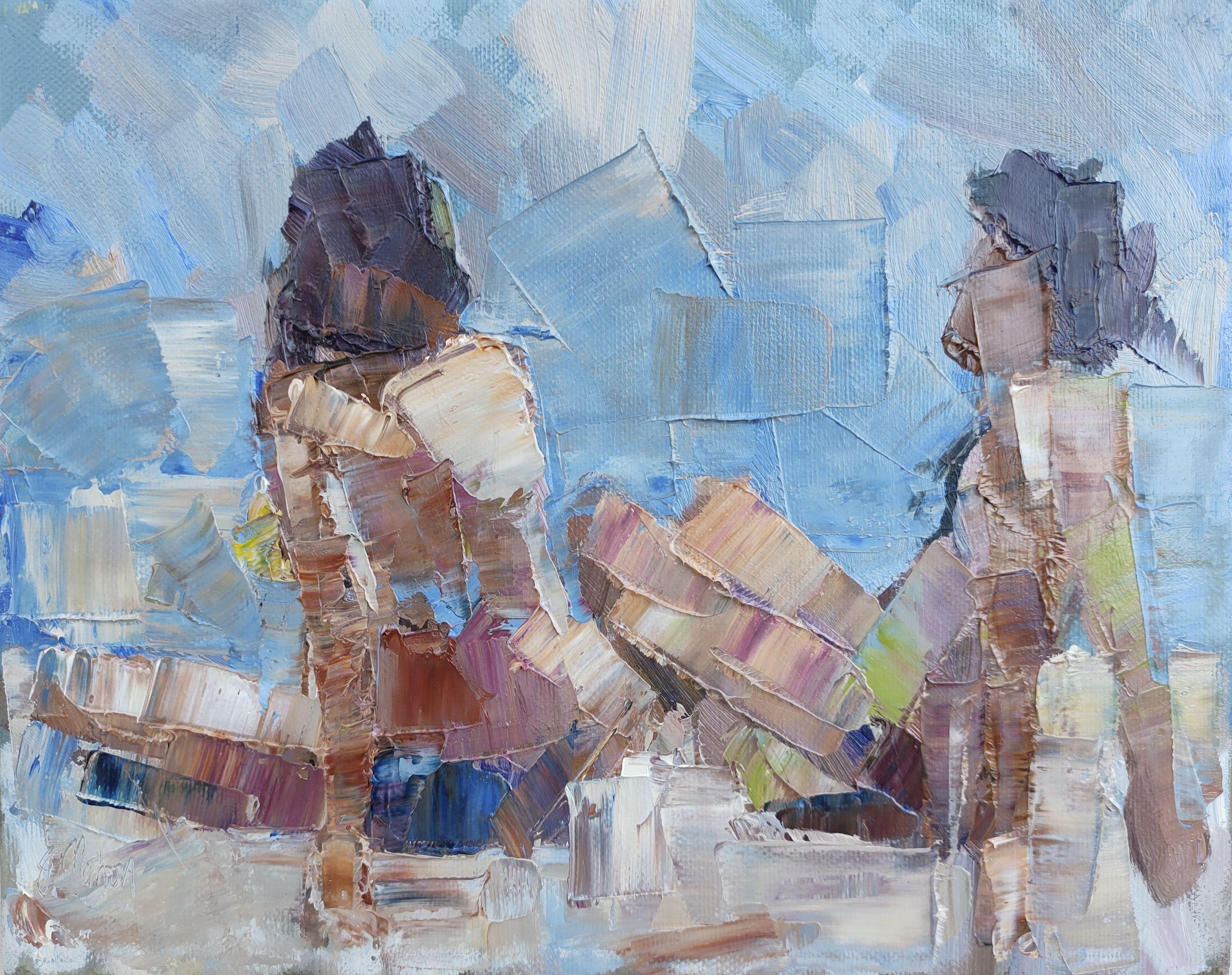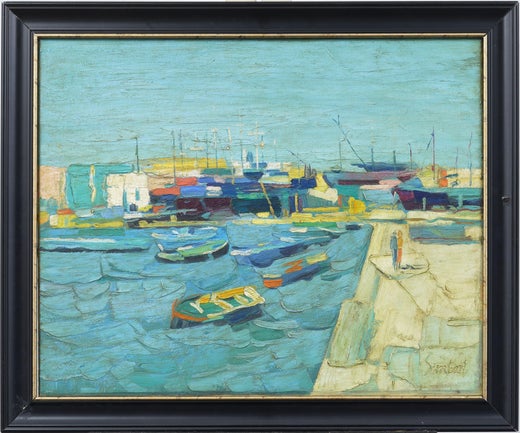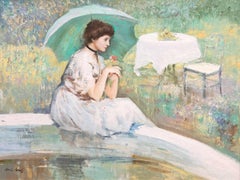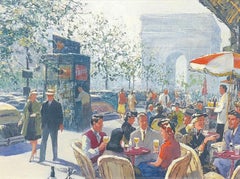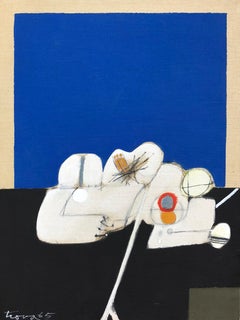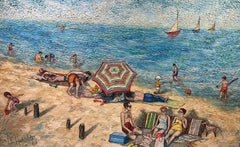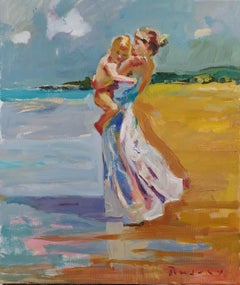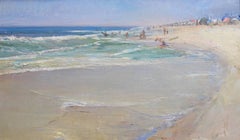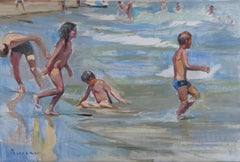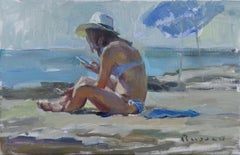Nicola SimbariWhite and Blue1964
1964
About the Item
- Creator:Nicola Simbari (1927, Italian)
- Creation Year:1964
- Dimensions:Height: 37 in (93.98 cm)Width: 46 in (116.84 cm)
- Medium:
- Movement & Style:
- Period:
- Condition:
- Gallery Location:Missouri, MO
- Reference Number:1stDibs: LU74732406043
Nicola Simbari
Italian painter Nicola Simbari used vivid color to convey the beauty and richness of life. His figurative paintings and drawings were often set in serene Mediterranean landscapes, giving them a romantic quality. Simbari had a distinctive contemporary and expressionist style characterized by broad strokes of saturated pastels, creating scenes that seemed to be soaked in sunlight.
Simbari was born in 1927 in Calabria, Italy, a region known for its stunning sea vistas. When he was three years old, his family moved to Rome, where his father worked as an architect at the Vatican. Surrounded and enthralled by the city’s cultural masterpieces, Simbari decided to pursue art. He studied painting and architecture at the Accademia di Belle Arti di Roma and opened his studio when he was 22 years old.
In 1953, Simbari held his first solo show in Rome and won a best stage design award for the musical Tarantella Napoletana. In 1958, he had a solo show in London and a mural commission for the Italian Pavilion at the Brussels World’s Fair.
Simbari never stopped growing as an artist. He experimented with many styles throughout his career and constantly pursued new colors to expand his range as a painter. When he died in 2012, Simbari was considered one of Italy’s greatest living artists.
Today, Simbari’s work is held in both private and public collections across the globe, including the Virginia Museum of Fine Arts, the Liberty Company, the Christian Dior Collection, the Bank of Tokyo, the University of Cincinnati Fine Arts Department, the Exxon Corporation and the Tulsa Bank of Commerce.
Simbari’s paintings continue to resonate with viewers. In 2021, Findlay Galleries in Palm Beach, Florida, presented “Mediterraneo,” an exhibition of his landscapes and figurative works.
On 1stDibs, find Nicola Simbari prints, paintings, watercolors and more.
- ShippingRetrieving quote...Shipping from: Missouri, MO
- Return Policy
More From This Seller
View All1990s Impressionist Figurative Paintings
Canvas, Oil
Mid-20th Century American Impressionist Figurative Paintings
Canvas, Oil
1960s American Modern Abstract Paintings
Canvas, Oil
20th Century American Impressionist Landscape Paintings
Oil, Panel
Late 20th Century Impressionist Landscape Paintings
Canvas, Oil
19th Century Realist Landscape Paintings
Oil, Panel
You May Also Like
2010s Impressionist Landscape Paintings
Canvas, Oil
21st Century and Contemporary Impressionist Landscape Paintings
Oil, Panel
2010s Impressionist Landscape Paintings
Canvas, Acrylic
2010s Impressionist Figurative Paintings
Canvas, Acrylic
21st Century and Contemporary Impressionist Landscape Paintings
Oil
2010s Impressionist Paintings
Oil
